Harvest icebox watermelon (Growing watermelon vertically) – Icebox watermelon how long to grow?
Growing icebox watermelons in field farming. The vertically grown icebox watermelons have reached their harvesting time. In a home garden, there aren’t many opportunities to cultivate icebox watermelons, so I’m looking forward to the harvest.
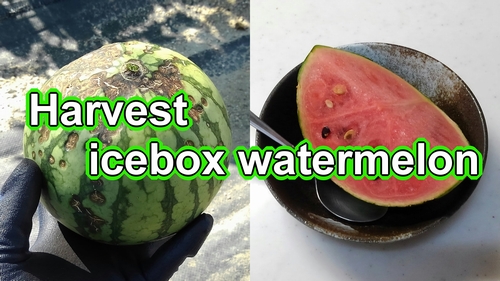
Growing icebox watermelon vertically (Icebox watermelon growing guide)
Best soil for icebox watermelon and best way to plant icebox watermelon
The icebox watermelon growing season starts in March. We prepared the soil first at the end of March. The best organic fertilizer for icebox watermelon is a fully ripened cattle manure, canola cakes, and fully matured chicken manure.
The icebox watermelon planting season typically falls in late April to early May. Therefore, we prepare the soil to match this planting season. (Organic fertilizers take about a month to integrate into the soil.)
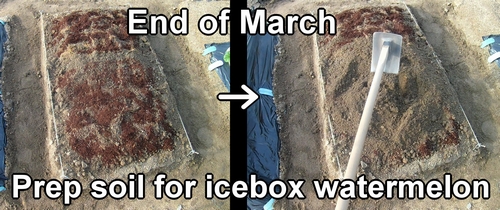
Icebox watermelon plant prefer well-draining soil, so we created raised beds. (This involves initially digging the soil in the plot and then mounding it up to create raised bed.)
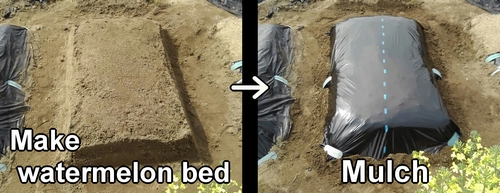
The planting icebox watermelon seedlings took place in late April. After planting, temporary stake is set up next to the icebox watermelon. Right after planting, the seedlings are still delicate and may bend or break in strong winds, so it’s necessary to support them with stakes.
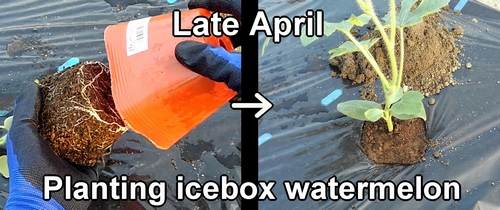
Staking and pruning for icebox watermelon (Prep for vertical cultivation of icebox watermelon)
In May, I began preparing for vertical cultivation of the icebox watermelons. First, in early May, I placed support stakes in the icebox watermelon bed. We are setting up support stakes using a method called “A-frame style", which is suitable for vertical cultivation of icebox watermelon. “A-frame style" is a method of setting up support stakes that is also used for crops like cucumbers and bitter gourds, known for its sturdiness.
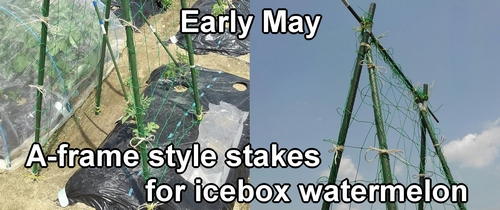
In mid-May, we performed the pruning the icebox watermelon. In the pinching of the icebox watermelons, we use scissors to cut the tip of the main vine (primary vine) to prevent further growth. This is done to encourage the development of secondary vines.
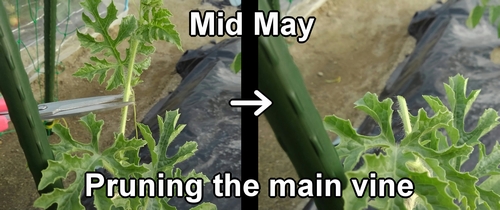
Icebox watermelons tend to produce fruit more readily on secondary vines and thirdly vines rather than the main vine. Pruning increases the number of vines, which also results in more flowers and a higher likelihood of icebox watermelons bearing fruit.
Hand pollination and fertilization for icebox watermelons (Watermelon plant care)
In early June, as the female flowers of the icebox watermelon started to bloom, we performed hand pollination. Icebox watermelons are a type of vegetable that cannot bear fruit without successful pollination.
In home gardens, the number of icebox watermelon plants is typically low, and the chances of natural pollination are limited. To ensure successful fruiting, it is recommended to perform hand pollination.
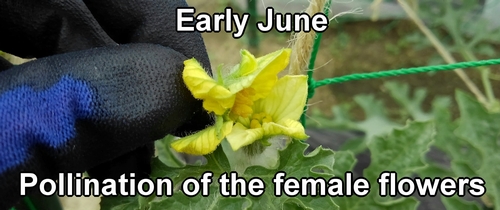
The icebox watermelons, having successfully undergone hand pollination and fruited, received additional fertilization in mid-June. The timing for the icebox watermelon’s additional fertilization is when the size of the fruits has reached that of a hen’s egg. We use chicken manure for additional fertilization.
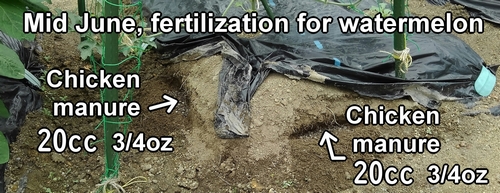
Supporting the vertical cultivation of icebox watermelons with a net (Watermelon growing tips)
After a few days following the fertilization, the icebox watermelon grew to a size of about 7cm (2.76 inch) in diameter. For vertical cultivation of icebox watermelons, the vines are supported from below using nets because they can be strained by the weight. (Place the hammock-style net under the icebox watermelons.)
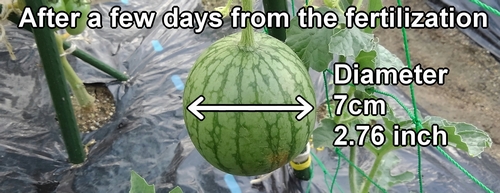

The vertical cultivation of icebox watermelons has reached the harvesting season
This icebox watermelon is not quite ready for harvest, but it seems like the fruit might be diseased, so I’ll pick it before it goes bad. Even if it’s sick, it seems that vegetable diseases don’t transfer to humans, so as long as the inside is ripe, it can be eaten.

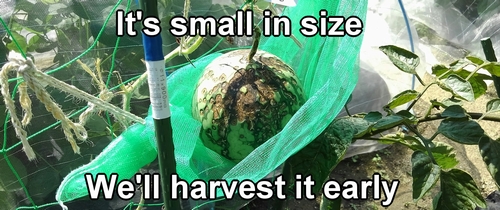

The harvested icebox watermelon was from flowers that bloomed in early June, so it’s been about a month since pollination. Icebox watermelons typically take about 35 to 40 days from pollination to the ideal harvest time, so we’re still about 5 to 10 days short in terms of the number of days.
I managed to harvest, but the appearance is a bit disappointing. I hope at least the inside is sweet. (It seems that watermelon is ripe when most of the seeds inside are black. On the other hand, if there are many white seeds and the flesh has a 'melon’ feel, it’s still immature.)
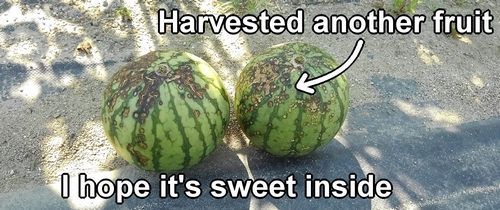
When I got home and cut the harvested watermelon, the inside was ripe and red. It was sweet and delicious. It was delicious, so if I have the chance, I’d like to grow it again.
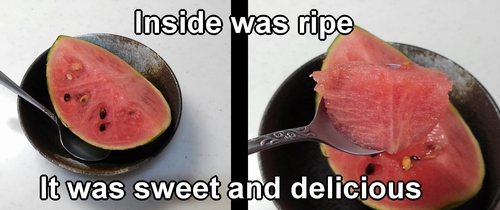
Following is the video for how-to. English subtitles are available.


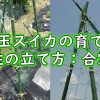





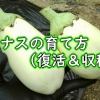







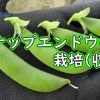

ディスカッション
コメント一覧
まだ、コメントがありません